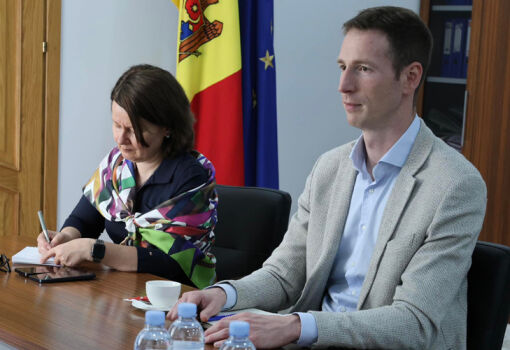
Doina Nistor
Within the framework of two projects implemented by the government with the support of the World Bank Group, 303 public services were digitalized. The event “Digital Moldova – 15 Years of Digital Transformation” presented the main results of the last, seven-year Modernization of Government Services Project (MGSP), which was recently completed.
In particular, 110 public services were digitalized; seven new digital platforms were created (MDelivery, Semantic Catalog for MConnect, FOD, MPower, e-APL, e-Consulate, Mdocs); 15 upgrades of existing digital platforms (MPass, MSign, MConnect, MCloud, Portalul Serviciilor Publice, Catalogul semantic, Portalul Cetățeanului, Portalul pentru Business, MPay, MLog); 94 services were improved, reducing the delivery time for some of them by 40%. 105 single service delivery centers (CUPS) were launched throughout the country.
In the last five years alone, the digitalization of public services has saved 41 billion lei, of which 10 billion lei is citizens’ money.
Deputy Prime Minister, Minister of Economic Development and Digitalization Doina Nistor said: “Moldova has positioned itself as a regional leader, offering more than 300 public services available online. Digital Moldova today means that citizens no longer need to run from one institution to another, because the state is just one click away. The state is now online. The most eloquent example is undoubtedly the EVO application, which brings together the most important public services for both citizens and entrepreneurs. By the end of 2025. 75% of government services for the business environment will be fully digitized. And by 2030. Moldova has promised to become a 100% digital state”.
According to the latest annual survey on citizen satisfaction with public services, 95% of respondents want to access them online, and 59% prefer to do so from their cell phones.
The first e-Government Transformation project (implemented between 2011 and 2016) laid the foundations for public administration platforms by launching M-based services, the first e-services. It also laid the groundwork for the creation of a government cloud.
Currently, 54% of citizens have access to digital government services (25% seven years ago). Including 38% of citizens from vulnerable groups were able to use them in the last 12 months. In 2018 (at the start of the second project) – only 6%.
The total investment in both projects, which were implemented over 15 years, amounted to $46 million. They were fully recouped by the savings generated by the MPay service alone (due to reduced payment processing fees). The Agency for Electronic Government (AGE), established in 2010, is responsible for the promotion and implementation of projects to digitize public services.













